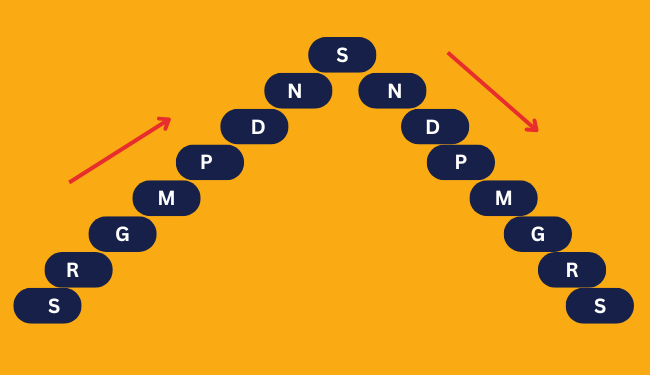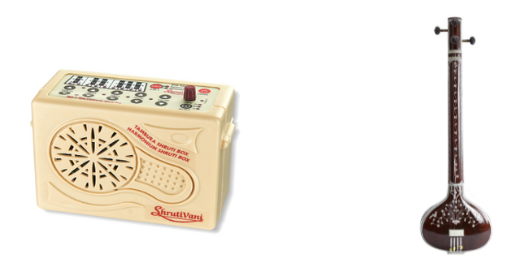
Voice is the greatest instrument a human has. The human voice is not only used in speaking, but also in singing. Sruthi is the main element that differentiates singing from speaking. Choosing the right sruthi is very important in a singer's life.
So, in this article, let’s explore the concept of shruti, how you can identify your vocal range, and how to choose and sing in the right shruti.
1. What is Sruthi?
Sruthi is considered the Mother of Music - (Sruthir Mathah Laya Pitah), while Laya, Talam is the Father of Music. Sruthi is the musical pitch or note which is identifiable by a trained and refined ear. It's the foundation and backbone for creating melodious compositions. When we sing, there are specific pitches that our ears recognize as pleasant and pleasing sounds. These specific points, or pitches, are called Shruti.
Have a look on the given below sruthis:

The swara S or Shadjam forms the foundation and the other swaras such as R, G, M, P, D, N are positioned with reference to this base in definite intervals of frequencies.
Saptaswaras in ascending and descending order

2. How to correct the sruthi?
Here comes the most commonly asked question from music lovers!
How can we make sure that we are singing in the correct pitch?
Well, we have such a wonderful instrument that produces a continuous drone sound. And that magical instrument is the Tambura or Tanpura. This instrument helps us in tuning the specific sruthi that a person is looking for. The usage of this instrument is very rare nowadays. Instead, musicians use the Sruthi box or some of the applications that are easily available on mobile phones.
You can practice with Tanpura using Spardha’s online Tanpura available for free on our website. You can just play your required scale and try to match your voice.

3. Picking up the correct sruthi
Listen to the sound of the Tanpura very carefully. The first step is to identify the base swara Shadjam (Sa). From here, the singer can identify the other swaras in that octave, so that one complete range is reachable in this step.
Once the base Sa and Thara Shadja (Sa in the higher octave) are identified, going to the next octave will be an easier task. Similarly, once the base Sa is identified, going one octave below that will be convenient. Hence, the identification of the base swara becomes crucial to identify your vocal range.
If a person is able to sing the swaras more than 2 octaves covering the lower to the higher region without any strain, then that is said to be his/her vocal range. Usually the sruthis are divided as male sruthi and female sruthi. The male sruthis start from C, C#, D, D#, E, F and the female sruthis are arranged as F#, G, G#, A, A#, B.
- Set your base Shadjam (Madhya shadjam).
- Start singing from the Madhya Shadjam.
- Gradually sing the next swaras till your maximum higher note, maintaining the same sruthi.
- Try to sing the swaras in the lower octave till your maximum.
- Notice how many octaves you could sing and what the number of swaras above that octave was.
Click the below pitches and try to sing along to find out your correct sruthi
This method will help you calculate and understand how many swaras lower or higher you can sing from your Sa.
The ability to sing smoothly through the middle octave (from base Sa to higher Sa in that octave) is one range, anything above the higher Sa, which is the higher octave, is usually half octave for vocalists, as the number of swaras reachable are limited to Pa. Similarly, in the lower octave, the swaras reachable could be till Ma, generally. With practice, the vocal range can be improved to reach higher and lower respectively.
So, whether you're a lover of Indian classical or Western tunes, embracing the correct Shruti is essential for capturing the true essence of a song. Keep exploring and let the magic of Shruti guide you towards musical perfection!
